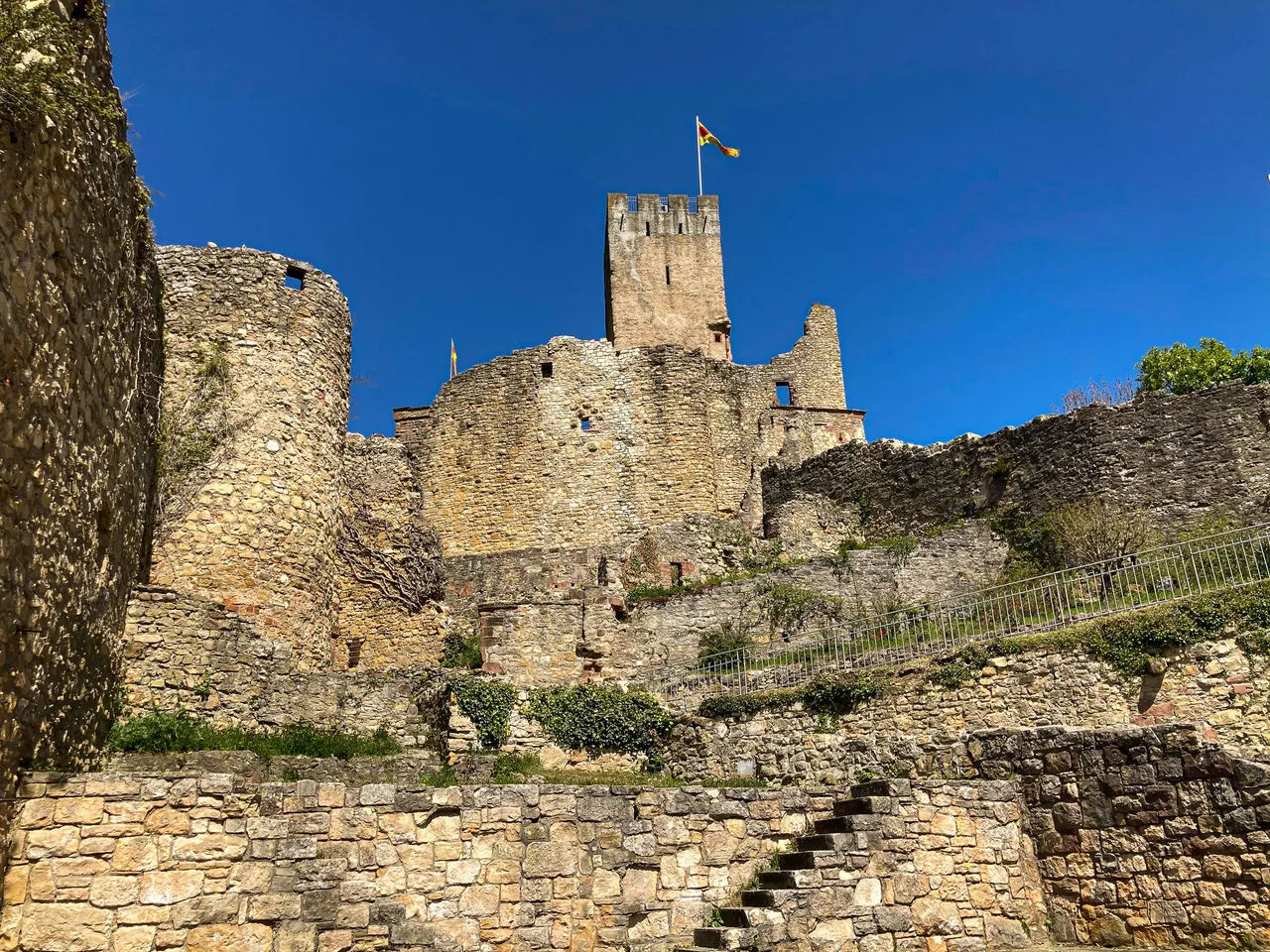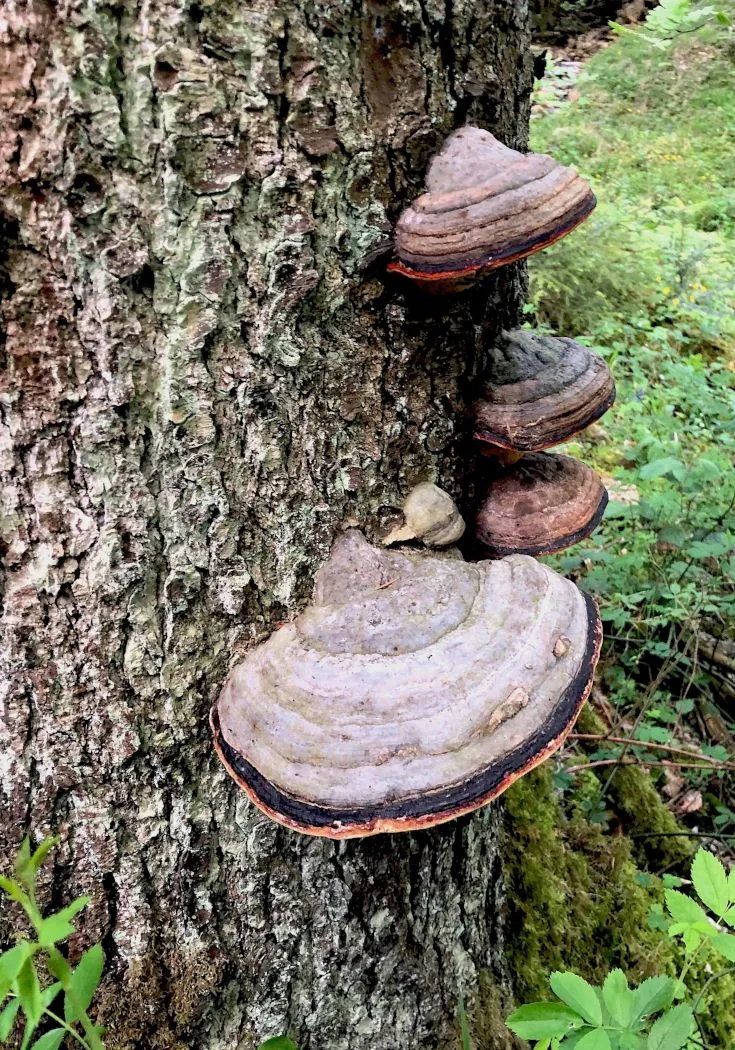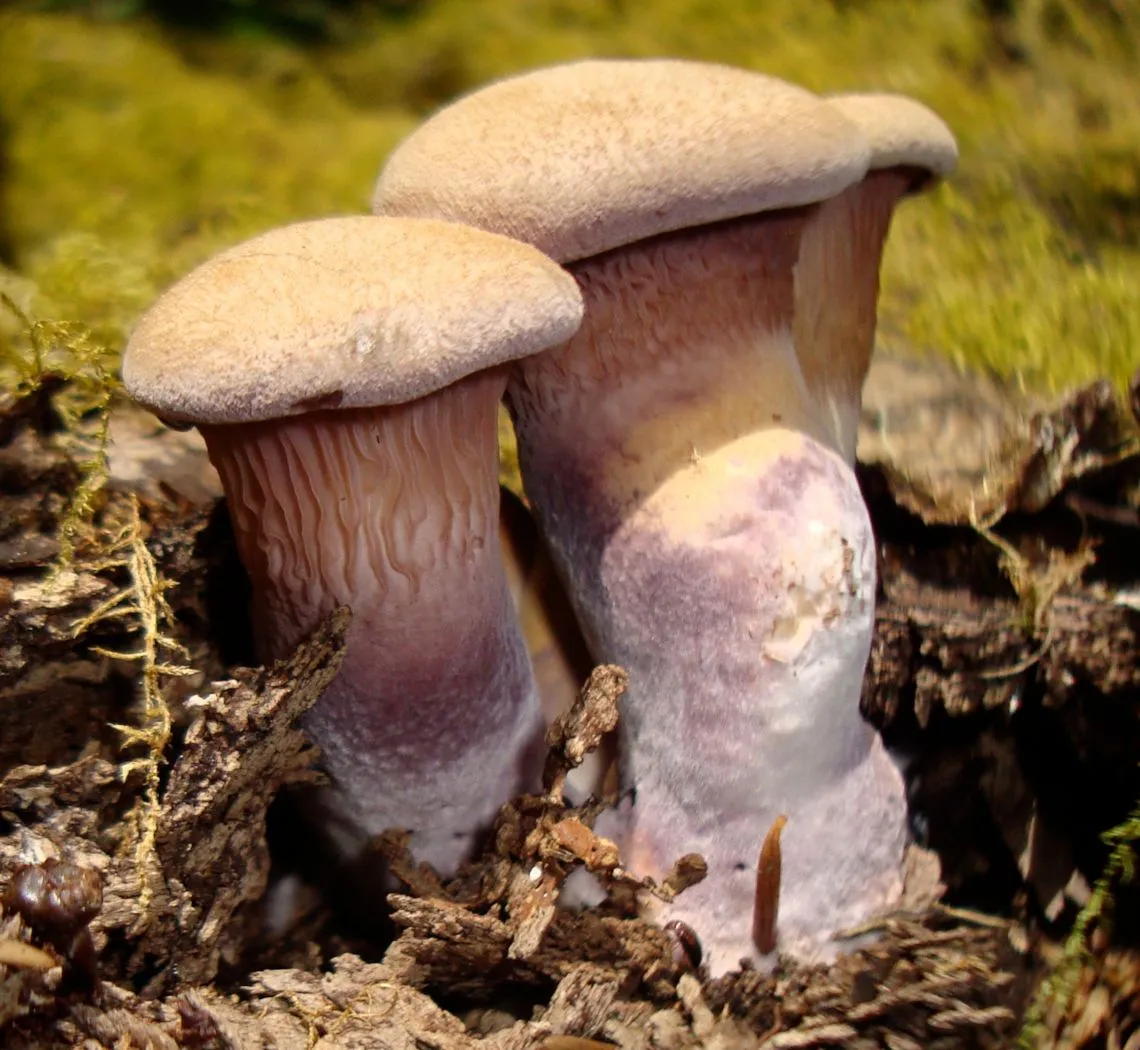
I have created a collage inspired by @shaka's prompt for LMAC #79, although I am not one of the contestants. Every week I find the process of interpreting @shaka's template photo an enriching experience.
@shaka's Template Photo

Not only is making a collage a creative exercise, it also gives rise to trains of thought that might not have come to me otherwise. This week I saw ruins, and imagined the future that might evolve from the ruins. Life, ultimately, rises from decay. So I started to read about the cycle of decay and life.
Fungi are foot soldiers in the process of decay.
The Fungus Fomes Fomentarious

Image credit: Olga Ernst. Used under a CC 4.0 license.
Fomes Fomentarious favors hardwood trees. According to the website MushroomExpert.com, this fungus may be found on birch and beech trees in the north temperate zones of North America. The fungus causes white rot, which may eventually kill a tree.
In 1991, the 5000-year-old mummified Iceman was discovered in the Austrian Alps. With his remains was discovered Fomes Fomentarious. The Iceman was carrying the fungus, possibly to use as 'tinder'. The fungus burns well and could have been used to transport fire.
Hypholoma Fasciculare Queteraro

Image credit: Alan Rockeffer. Used under a CC 4.0 license
This fungus is called a saprophyte because it feeds on dead material. It is an essential player in returning nutrients to the soil. The fungus is widely distributed in cold areas. Hypholoma fasciculare grows in clusters. Do not eat! It is poisonous.
Panus Conchatus

Image credit: Richard Sullivan. Used under CC 3.0 license.
This fungus also grows on rotting material. It is also characterized as a saprophyte. The fungus grows on (dead) hardwoods in northern and central Europe, and can also be found in North America. Panus Conchatus is also called the Lilac Oysterling because of its often purplish cap.

According to the website, It's Alive, there are 70,000 known species of fungus on the planet. However, it is estimated that there are at least 20 times as yet undiscovered. Fungi not only break down nonliving organisms, but also form symbiotic relations with living organisms. They are a vital part of the life cycle on earth.

My Collage
I used pictures from https://purepng.com/ in constructing my collage.
trees
bush with pink flowers
purple plant
scraggly bush
wolf
wolf 2
wolf 3
green snake
coral snake
hawk
crow
turtle
Mushroom accent in the blog came from cafepampas on pixabay
As always, I had fun. Thank you @shaka, for the opportunity and for doing the work it takes to make the LMAC community a viable, welcoming place.
The rules for LMAC may be found at @shaka's blog.
Our school, run by the inimitable @quantumg may be found here.
And our Discord Channel is open for community members to touch base.
Good luck, to everyone!

